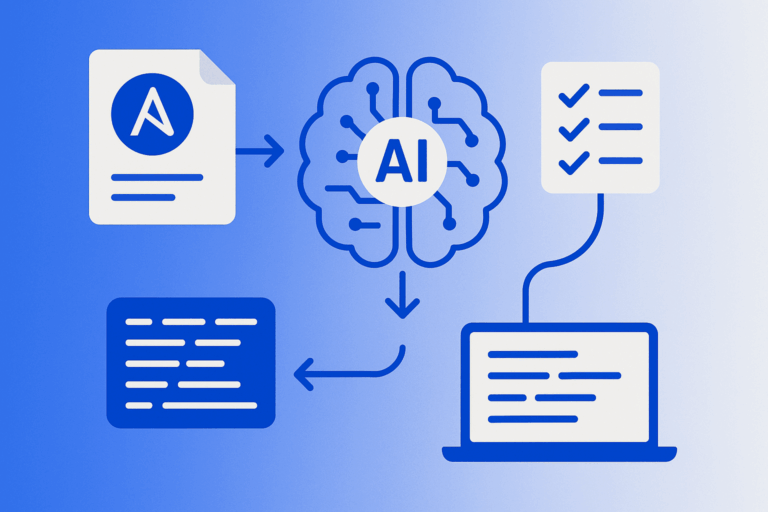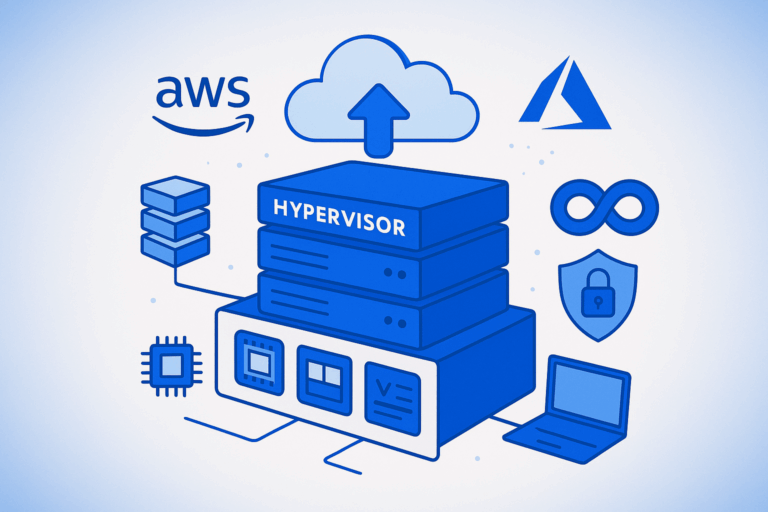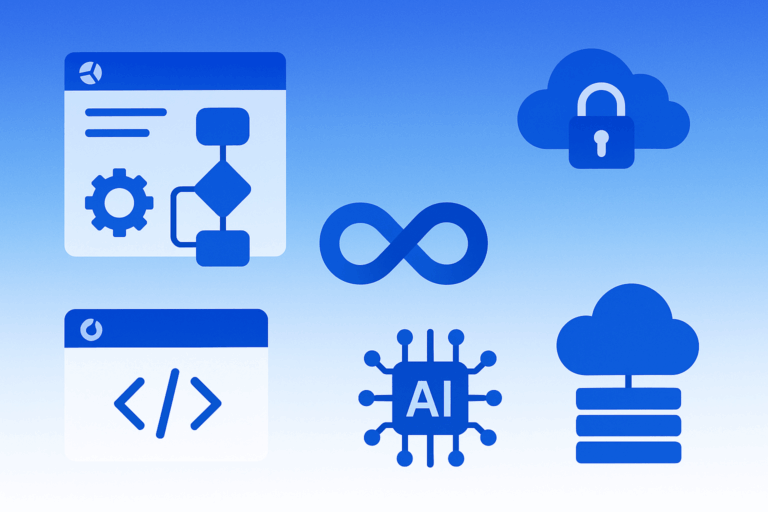DevSecOps: The Ultimate Guide to Securing Your Development Pipeline

Introduction: What is DevSecOps 🔒and Why It Matters
In today’s fast-paced digital landscape, DevSecOps has become the cornerstone of secure software development. DevSecOps stands for development, security, and operations. It’s an approach to culture, automation, and platform design that integrates security as a shared responsibility throughout the entire IT lifecycle.
This revolutionary approach transforms how organizations handle security in their development processes. Unlike traditional cybersecurity methods, DevSecOps embeds security practices directly into the development workflow, ensuring protection from day one.
For DevOps engineers working with Terraform and Azure Cloud environments, understanding DevSecOps principles is crucial for building resilient, secure applications that meet modern compliance requirements.

Understanding DevSecOps: Breaking Down the Fundamentals
What Makes DevSecOps Different?
DevSecOps represents a paradigm shift from traditional security approaches. Instead of treating security as a final checkpoint, it becomes an integral part of every development stage.
The core principles include:
- Shift-left security: Moving security considerations earlier in the development lifecycle
- Continuous monitoring: Real-time security assessments throughout the pipeline
- Automated security testing: Integration of security tools into CI/CD workflows
- Collaborative culture: Breaking down silos between development, security, and operations teams
The Evolution from DevOps to DevSecOps
Traditional DevOps focused on collaboration between development and operations teams. DevSecOps differs from DevOps in that it brings the security team into this collaboration earlier in the SDLC. In the past, security was largely relegated to the Testing phase of the SDLC, when development was largely complete and the cost of fixing problems was high.
This evolution addresses critical gaps in modern software development where speed and security must coexist harmoniously.
DevSecOps vs Cybersecurity: Understanding the Key Differences
Scope and Application
| Aspect | DevSecOps | Traditional Cybersecurity |
|---|---|---|
| Focus | Development pipeline security | Broad organizational security |
| Timing | Proactive, built-in | Reactive, after-the-fact |
| Scope | Software development lifecycle | Enterprise-wide protection |
| Approach | Automated, continuous | Manual, periodic |
| Team Integration | Embedded with dev teams | Separate security department |
Fundamental Differences Explained
DevSecOps focuses specifically on securing the software development process. Cybersecurity can be used wherever there is digitalization, whereas we use DevSecOps mainly while building a product.
Traditional Cybersecurity encompasses broader organizational security measures including:
- Network security
- Endpoint protection
- Identity and access management
- Incident response
- Compliance frameworks
DevSecOps, on the other hand, concentrates on:
- Code security analysis
- Container security
- Pipeline security
- Infrastructure as code security
- Continuous vulnerability assessment
When to Use Each Approach
Organizations need both approaches working in harmony. DevSecOps handles application-level security during development, while cybersecurity manages broader organizational threats and compliance requirements.
Core Components of DevSecOps Implementation
1. Security Automation in CI/CD Pipelines
DevSecOps automates security best practices across all of your applications and networks. You can integrate virtually any security tool you use in production–such as intrusion detection, monitoring, and access control–with version control and CI/CD to create a comprehensive DevSecOps pipeline.
Example: Terraform Security Automation
# Example Terraform configuration with security scanning
resource "aws_security_group" "web_server" {
name_description = "Security group for web servers"
ingress {
from_port = 443
to_port = 443
protocol = "tcp"
cidr_blocks = ["0.0.0.0/0"]
}
# Automated security scanning tags
tags = {
SecurityScan = "required"
Compliance = "SOC2"
}
}
# Security validation using Terraform Cloud
terraform {
cloud {
organization = "my-org"
workspaces {
name = "production"
}
}
}2. Container Security Integration
Modern DevSecOps practices include comprehensive container security measures:
- Image scanning: Automated vulnerability detection in container images
- Runtime protection: Real-time monitoring of container behavior
- Compliance checking: Ensuring containers meet security standards
3. Infrastructure as Code (IaC) Security
Terraform and Azure Cloud environments require specific security considerations:
Azure DevSecOps Pipeline Example
# Azure DevOps Pipeline with security integration
trigger:
- main
pool:
vmImage: 'ubuntu-latest'
stages:
- stage: SecurityScan
jobs:
- job: TerraformSecurity
steps:
- task: TerraformInstaller@0
inputs:
terraformVersion: 'latest'
- task: AzureCLI@2
inputs:
azureSubscription: 'production'
scriptType: 'bash'
scriptLocation: 'inlineScript'
inlineScript: |
# Security validation
terraform init
terraform plan -out=tfplan
terraform show -json tfplan > plan.json
# Run security scanning
checkov -f plan.json --framework terraform
Real-World DevSecOps Implementation Examples
Case Study 1: E-commerce Platform Security
A major e-commerce platform implemented DevSecOps with remarkable results:
Before DevSecOps:
- Security testing took 2-3 weeks per release
- 40% of vulnerabilities discovered in production
- Manual security reviews created bottlenecks
After DevSecOps:
- Automated security testing reduced to 30 minutes
- 95% of vulnerabilities caught during development
- Continuous deployment with built-in security checks
Case Study 2: Financial Services Transformation
A financial services company leveraged DevSecOps for regulatory compliance:
Implementation Strategy:
- Integrated compliance checks into CI/CD pipelines
- Automated PCI DSS compliance validation
- Real-time security monitoring across all environments
Results:
- 80% reduction in compliance audit time
- Zero security incidents in production
- Faster time-to-market for new features
DevSecOps Tools and Technologies
Essential Tool Categories
Static Application Security Testing (SAST)
- SonarQube
- Checkmarx
- Veracode
Dynamic Application Security Testing (DAST)
- OWASP ZAP
- Burp Suite
- Rapid7 AppSpider
Container Security
- Twistlock
- Aqua Security
- Sysdig
Infrastructure Security
- Terraform Cloud
- Azure Security Center
- AWS Security Hub
Integration with Azure Cloud Services
DevOps engineers working with Azure Cloud can leverage native security services:
- Azure DevOps Security: Built-in security scanning and compliance tools
- Azure Security Center: Centralized security management
- Azure Key Vault: Secure secrets management
- Azure Monitor: Comprehensive logging and alerting
Best Practices for DevSecOps Implementation
1. Start with Culture Change
Successful DevSecOps implementation begins with cultural transformation:
- Education: Train development teams on security fundamentals
- Collaboration: Foster communication between dev, sec, and ops teams
- Accountability: Make security everyone’s responsibility
2. Implement Gradually
Phase 1: Foundation
- Establish basic security scanning in CI/CD
- Implement secrets management
- Set up vulnerability tracking
Phase 2: Automation
- Automate security testing
- Integrate compliance checking
- Implement continuous monitoring
Phase 3: Optimization
- Fine-tune security policies
- Implement advanced threat detection
- Establish security metrics and KPIs
3. Choose the Right Tools
Select tools that integrate well with your existing Terraform and Azure Cloud infrastructure:
Tool Selection Matrix
| Category | Open Source | Commercial | Cloud Native |
|---|---|---|---|
| SAST | SonarQube | Checkmarx | GitHub Advanced Security |
| DAST | OWASP ZAP | Rapid7 | Azure Security Center |
| IaC Security | Checkov | Prisma Cloud | AWS Config |
Measuring DevSecOps Success
Key Performance Indicators (KPIs)
Security Metrics:
- Mean time to detection (MTTD)
- Mean time to resolution (MTTR)
- Number of vulnerabilities in production
- Security test coverage percentage
Business Metrics:
- Deployment frequency
- Lead time for changes
- Change failure rate
- Service reliability
Continuous Improvement Framework
- Measure: Establish baseline security metrics
- Analyze: Identify bottlenecks and improvement opportunities
- Improve: Implement changes and automation
- Monitor: Track progress and adjust strategies
Challenges and Solutions in DevSecOps
Common Implementation Challenges
Challenge 1: Resistance to Change
- Solution: Start with small wins and demonstrate value
- Approach: Provide training and support for team members
Challenge 2: Tool Integration Complexity
- Solution: Choose tools with robust APIs and integration capabilities
- Approach: Implement gradually and test thoroughly
Challenge 3: Performance Impact
- Solution: Optimize security scanning for speed
- Approach: Use parallel processing and caching strategies
Overcoming Cultural Barriers
Traditional security teams may resist DevSecOps adoption. Address this by:
- Demonstrating value: Show how DevSecOps improves security outcomes
- Providing training: Educate teams on new tools and processes
- Creating incentives: Align goals and rewards with DevSecOps practices
The Future of DevSecOps
Emerging Trends
AI-Powered Security Analysis
But in 2024, AI-generated code and AI-assisted development widened the gap between security and development teams. Now, software development pipelines are flowing faster than security testing pipelines, and something’s about to burst.
Organizations are addressing this challenge by:
- Implementing AI-powered security scanning tools
- Automating threat detection and response
- Using machine learning for anomaly detection
Zero Trust Architecture Integration
Modern DevSecOps practices incorporate zero trust principles:
- Never trust, always verify: Every request requires authentication
- Least privilege access: Minimal required permissions only
- Continuous monitoring: Real-time security assessment
Industry Predictions for 2025-2026
Increased Automation: 90% of security testing will be automated
Compliance Integration: Built-in regulatory compliance checking
Cloud-Native Security: Platform-specific security optimizations
How Devolity Business Solutions Optimizes Your Cloud Security Journey
Devolity Business Solutions specializes in transforming your cloud infrastructure through comprehensive DevSecOps implementation. Our expert team helps organizations integrate security seamlessly into their Terraform and Azure Cloud environments.
Our Services Include:
- DevSecOps Strategy Development: Customized roadmaps for your organization
- Azure Cloud Security Optimization: Native Azure security service integration
- Terraform Security Implementation: Infrastructure as code security best practices
- DevOps Engineer Training: Comprehensive skill development programs
With deep expertise in cloud security and DevOps practices, Devolity ensures your transition to DevSecOps delivers measurable security improvements while maintaining development velocity.
Why choose Devolity
Unmatched Expertise in
Cloud and Cybersecurity
Devolity team of certified professionals brings decades of combined experience in managing complex cloud environments and defending against evolving cyber threats.
01
End-to-End Solutions for Every Business Need
DevOps with Cybersecurity Services: Hybrid/multi-cloud management, cost optimization, and DevOps integration with Risk assessments.
02
Customized Strategies, Not One-Size-Fits-All
We understand every business is unique. Devolity prioritizes collaboration, crafting bespoke solutions aligned with your industry, goals, and risk profile.
03
Proactive Protection with 24/7 Vigilance
Cyber threats never sleep—and neither do we. Devolity Security Operations Center (SOC) offers round-the-clock monitoring, rapid incident response.
Conclusion: Embracing the DevSecOps Revolution
DevSecOps represents more than just a methodology—it’s a fundamental shift toward secure, efficient software development. By integrating security into every stage of the development lifecycle, organizations can achieve both speed and security.
The differences between DevSecOps and traditional cybersecurity highlight the need for specialized approaches to modern software development challenges. While cybersecurity provides broad organizational protection, DevSecOps focuses specifically on securing the development pipeline.
Key Takeaways:
- DevSecOps integrates security throughout the development lifecycle
- It differs from cybersecurity by focusing on development-specific security needs
- Implementation requires cultural change, tool integration, and continuous improvement
- Success depends on choosing the right tools and measuring the right metrics
For DevOps engineers working with Terraform and Azure Cloud, adopting DevSecOps practices is essential for building secure, compliant applications in today’s threat landscape.
Additional Resources
- Red Hat DevSecOps Guide
- AWS DevSecOps Best Practices
- Terraform Security Documentation
- Azure DevOps Security
- Spacelift DevSecOps Resources
- Atlassian DevOps Practices
Ready to transform your development pipeline with DevSecOps? Contact Devolity Business Solutions today for a comprehensive security assessment and implementation roadmap tailored to your organization’s needs.
Transform Business with Cloud
Devolity simplifies state management with automation, strong security, and detailed auditing.







